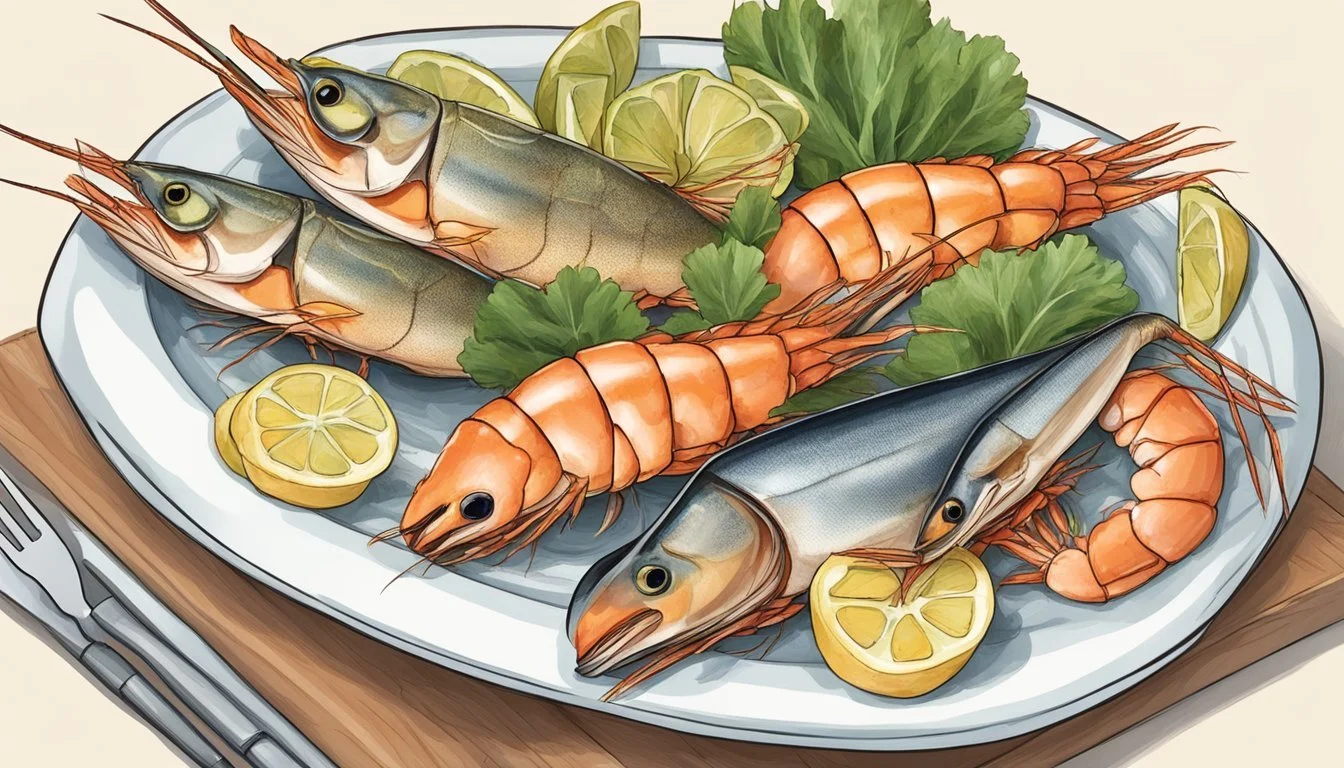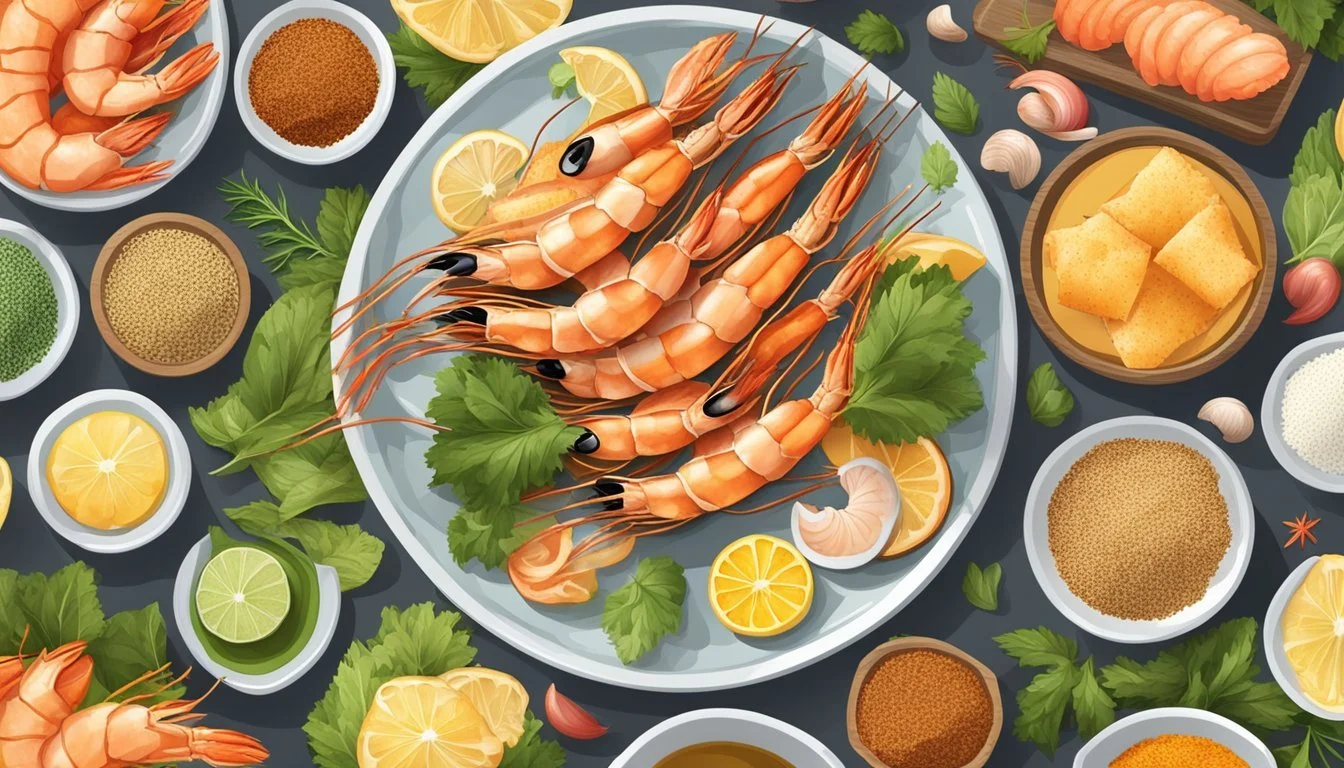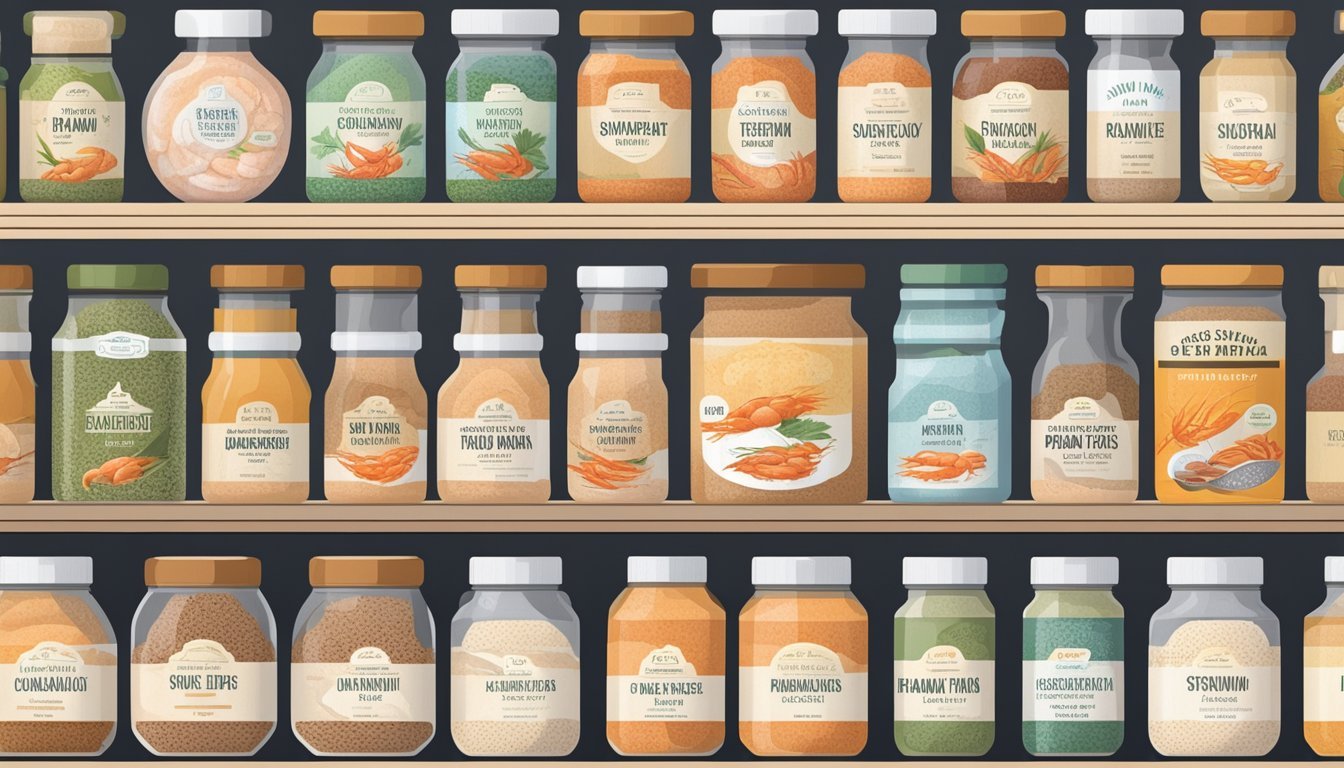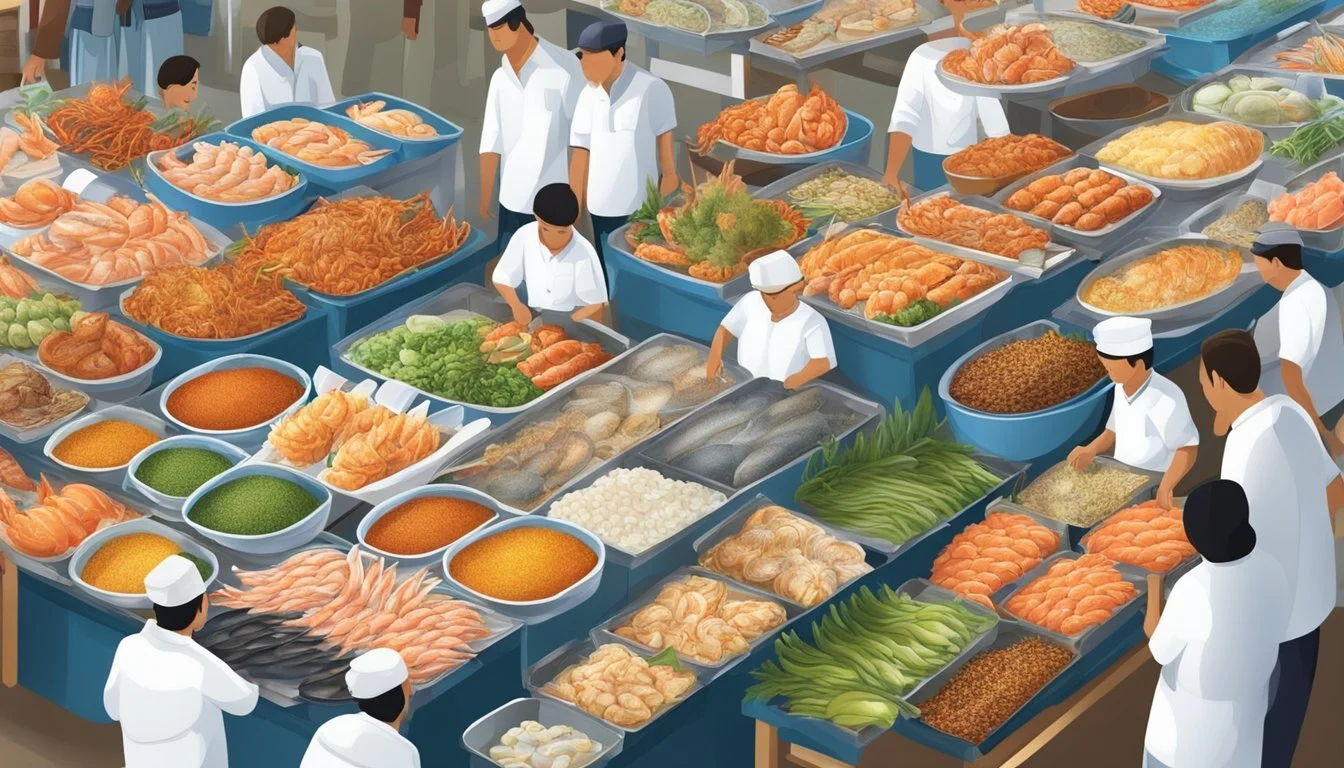Prawns Substitutes
Tasty Alternatives for Every Dish
For those who love seafood but are looking for a substitute for prawns, various options can mimic their taste and texture. Oysters, for instance, offer a similar briny flavor and meaty texture, making them a great alternative in recipes such as paella or seafood pasta dishes. Shrimp, another close relative, can easily replace prawns due to their comparable flavor profiles.
If dietary restrictions or allergies to shellfish are a concern, there are also suitable substitutes. White fish and chicken can serve as a non-shellfish option, providing the desired protein without the risk. For a vegan approach, ingredients like king oyster mushrooms and sweet potatoes can replicate the texture and carry the flavors well in dishes that traditionally use prawns.
Exploring these alternatives can keep your meals exciting and safe, regardless of dietary needs. Each substitute brings its unique twist to the dish, ensuring you don't miss out on your favorite seafood flavors.
Understanding Seafood and Shellfish Allergies
Individuals with seafood and shellfish allergies must be vigilant about identifying allergens and practicing safe handling to avoid potential reactions. The information below provides a detailed overview of common allergens and essential avoidance techniques.
Identifying Common Allergens
Seafood and shellfish allergies can trigger severe reactions, sometimes even from minimal exposure. Shellfish are categorized into two groups: crustaceans (such as shrimp, crab, and lobster) and mollusks (like clams, oysters, and mussels).
Common allergens often include shrimp, crab, lobster, and octopus. Shellfish proteins, which trigger allergies, can be found in surprising places such as meatless sausages, Worcestershire sauce, and some salad dressings. It is crucial to read food labels carefully and ask detailed questions about ingredients when dining out.
Safe Handling Practices and Avoidance
Those with shellfish allergies should adopt stringent safe handling practices to prevent exposure. This involves avoiding cross-contamination in kitchens where seafood is prepared. It is recommended to use separate utensils, cutting boards, and cooking surfaces for non-seafood items.
When shopping, ensure that shellfish products are not stored close to other foods. At restaurants, alert staff to allergies, requesting dishes to be prepared away from seafood. Always carry emergency medications, like antihistamines or an epinephrine auto-injector, to manage accidental exposure incidents promptly. These steps significantly reduce the risk of foodborne illnesses related to shellfish allergies.
Prawns in Cuisine
Prawns are a popular seafood ingredient known for their delicate flavor and firm texture. They appear in a variety of dishes, from appetizers to main courses, giving each recipe a unique taste and appeal.
Characterizing Prawns' Flavor and Texture
Prawns are cherished for their briny, oceanic flavor that is slightly sweet. Their flesh is firm yet tender, making them an ideal ingredient for various types of cuisine. When cooked, prawns can retain a slightly crunchy texture, which adds an interesting contrast to the dish.
Compared to other seafood, prawns have a meaty consistency. This texture allows them to stand out in recipes, making them versatile for both cold dishes like shrimp cocktail and hot dishes like prawn curry. Their flavor profile is also adaptable, absorbing seasonings and sauces effectively.
Popular Prawn Dishes
Prawns feature prominently in many beloved recipes. Shrimp cocktail is a classic appetizer where prawns are served chilled with a tangy cocktail sauce. This dish highlights the natural taste and texture of prawns.
In contrast, prawn curry utilizes prawns in a more complex flavor environment. The prawns absorb the rich, spicy, and aromatic curry sauce, creating a hearty and satisfying main course.
Other popular dishes include prawn paella, which blends prawns with saffron rice and other seafood, and seafood pastas where prawns add substance and flavor.
Vegetarian and Vegan Substitutes for Prawns
Vegetarian and vegan substitutes for prawns offer delicious, healthier, and environmentally friendly options. These alternatives are designed to mimic the taste and texture of prawns while catering to those following plant-based diets.
Plant-Based Alternatives
BeLeaf Vegan Shrimp
BeLeaf's vegan shrimp is a popular choice. Made from konjac powder, vegetable gums, and starch, it closely resembles the texture of real prawns. These shrimp are versatile, fitting well in dishes like Shrimp Scampi or Bang Bang Shrimp.
Sweet Potatoes
Surprisingly, sweet potatoes can also substitute for prawns. By kneading sweet potato puree into a dough with shrimp-like texture and seasoning, you can achieve a prawn alternative. Adding seaweed to the broth enhances the fishy flavor.
Sophie's Kitchen
Sophie's Kitchen offers various plant-based seafood options, including shrimp made from konjac root. Their products are free from soy and gluten, catering to those with allergies.
Health Benefits of Vegan Options
Vegan prawn substitutes tend to be low in fat and calories compared to traditional prawns. This is beneficial for those watching their weight or looking to lower their cholesterol levels.
Nutrient-Rich Ingredients
These substitutes often contain nutrient-rich ingredients like konjac powder, which is high in fiber. This helps improve digestive health and maintain satiety.
Allergen-Friendly
Many vegan shrimp substitutes are free from common allergens like soy, gluten, and MSG, making them suitable for a wide range of dietary needs. For instance, BeLeaf's products cater to those with multiple dietary restrictions.
Environmental Impact
Choosing plant-based alternatives can also reduce one's environmental footprint, given the significant resources required for traditional prawn fishing and farming.
Animal-Based Prawn Substitutes
There are several effective animal-based substitutes for prawns, many of which provide a similar taste and texture. Various seafood options and meat alternatives can be used in dishes traditionally made with prawns.
Seafood Options
Lobster and Crab: Both lobster and crab offer a tender yet firm texture, making them ideal substitutes in dishes like seafood pasta or paella. Their mild, sweet flavor complements many recipes.
Scallops: With their delicate taste and slightly chewy texture, scallops can replace prawns in many dishes, such as scampi or grilled seafood platters.
Oysters: Oysters have a briny, oceanic flavor and a tender, meaty texture, making them suitable for prawn recipes. They work well in seafood stews and pasta dishes.
Mussels: Mussels are another excellent option. They are inexpensive, have a mild flavor, and can easily absorb the flavors of the dish they are cooked in.
Crayfish/Crawfish: Crayfish, also known as crawfish, offer a lower cholesterol option compared to prawns. Their slightly sweet flavor and firm texture make them a great substitute in various seafood dishes.
White Fish (Cod, Halibut): White fish such as cod and halibut have a mild flavor and firm texture, making them versatile substitutes. They can be used in recipes from soups to grilled entrees, providing a similar experience.
Meat Alternatives
Chicken: Chicken, specifically chicken breast, can be a convenient substitute for prawns in many dishes. Its mild flavor and ability to take on various seasonings make it a popular choice. It works well in dishes like stir-fries, curries, and salads.
Squid: Squid, with its slightly chewy texture and neutral flavor, can stand in for prawns in many recipes. It’s particularly good in dishes like calamari or seafood paellas.
Octopus: Octopus has a similar chewiness to prawns and can be used in a variety of recipes. Grilled octopus can replace prawns in salads and pasta dishes.
Fish Sauce: While not a direct substitute, fish sauce can be used to impart a seafood flavor to dishes where prawns are omitted. It’s particularly useful in soups, stews, and sauces.
Using these animal-based substitutes can accommodate dietary restrictions and shellfish allergies while still delivering satisfying and flavorful meals.
Non-Traditional Substitutes
For those seeking alternatives to prawns, vegetables and fungi can provide unique textures and flavors. These options cater to various dietary restrictions and preferences.
Vegetable-Based Substitutions
Sweet potatoes are a popular prawn alternative, offering a subtly sweet taste and firm texture. They work well in various dishes, including stews and stir-fries. Their natural sweetness complements savory flavors, creating a balanced profile.
Rice can mimic the texture of small prawns, especially in dishes like paella or jambalaya. When cooked al dente, the grains provide a slightly chewy consistency that many find similar to seafood.
Another noteworthy option is tofu. It is highly versatile and absorbs flavors well, making it suitable for dishes that traditionally use prawns. Its mild taste can be enhanced with marinades or sauces, providing a satisfying substitute.
Fungi as a Prawn Alternative
King oyster mushrooms are an exceptional substitute, offering a meat-like texture that closely resembles prawns. When sliced and cooked, they develop a tender yet chewy consistency, making them ideal for use in various recipes, from soups to stir-fries.
Enoki mushrooms also serve well in this role. Their long, thin strands provide a slight crunch, adding a unique twist to dishes. These mushrooms absorb flavors from the surrounding ingredients, enhancing the overall taste experience.
Both mushroom varieties are rich in nutrients and provide a different yet satisfying alternative for those who miss the texture and flavors of prawns in their meals.
Flavor Enhancers and Seasonings
Using flavor enhancers and seasonings can transform prawn dishes, bringing out their natural umami quality. Understanding the right combinations can elevate the taste further, making each dish more memorable.
Matching Prawns' Taste Profile
To enhance the umami taste of prawns, soy sauce stands as a go-to option. Soy sauce brings a salty and savory richness that complements the delicate flavor of prawns. Similarly, bouillon cubes can be dissolved to infuse a deep, meaty taste without overpowering the prawns.
Lemon butter sauce is another excellent match as its acidity cuts through the richness, while the butter adds a creamy layer. When aiming for a robust enhancement, Old Bay seasoning provides a mixture of spices that include celery salt, paprika, and black pepper, offering both heat and depth.
Herbs and Spices
Incorporating paprika can add color and a subtle smoky flavor that pairs well with prawns. Fresh herbs like parsley and cilantro impart a fresh, aromatic quality, while garlic and ginger provide a warm, spicy kick.
Adding black pepper and red pepper flakes can bring a punch of heat, balancing the prawn's sweetness. Herb blends such as Herbes de Provence or Italian seasoning can deliver a harmonious mix of flavors, with notes of thyme, rosemary, and oregano enhancing the dish.
Using these herbs and spices thoughtfully can accentuate the prawns' natural flavors, making every bite more delightful.
Utilizing Faux Seafood Products
For those looking to avoid traditional prawns, there are both commercially available imitations and home-cooked options that can provide similar textures and flavors.
Commercially Available Imitations
Commercial faux seafood products, like vegan shrimp and surimi (imitation crab), offer a convenient and consistent substitute. BeLeaf makes vegan shrimp from ingredients such as konjac powder and vegetable gum, which closely mimic the texture of prawns. These products are often found in the frozen section of grocery stores.
Langostino tails, another option, are often marketed as shrimp substitutes and can be used in various seafood recipes. These products are pre-cooked and can be easily added to dishes like paella or seafood pasta. Surimi often contains fish protein and can be used in salads or sushi.
Home-Cooked Fake Shrimp
For a more customized approach, home cooks can create their own imitation shrimp using ingredients like king oyster mushrooms and hearts of palm. These substitutes can be flavored with a variety of seasonings to replicate the taste and texture of prawns.
King oyster mushrooms, when sliced and marinated, resemble shrimp and absorb flavors well. Alternatively, carrot lox can be made by marinating thinly sliced carrots in a mixture of rice vinegar, lemon juice, and olive oil. This method provides an easy and cost-effective way to enjoy a prawn substitute.
Konjac shrimp is another popular homemade option. Konjac root has a naturally chewy texture that makes it perfect for this purpose. Cooking them in a garlic, lemon, and white wine sauce creates a gourmet experience that closely replicates traditional shrimp dishes.
Preparing Shrimp Substitutes in Recipes
Finding the right shrimp substitute involves considering flavors and textures. The cooking technique and recipe adaptation will determine how well the substitute matches original shrimp dishes.
Cooking Techniques
Choosing the appropriate cooking technique is crucial for successfully using shrimp substitutes. Sauteing is a common method; whether using tofu, white fish, or mushrooms, ensuring these substitutes absorb flavors is important. Quickly cook them over high heat with garlic, butter, or olive oil.
Dried shrimp and shrimp paste can also be rehydrated and incorporated into dishes, offering a concentrated umami flavor. Make sure to use small quantities as these options have strong tastes. For vegan alternatives, such as fake shrimp, follow package instructions for best results. Baking and grilling are excellent for achieving a firmer texture, especially for white fish or shellfish-free surimi.
Recipe Adaptations
Modifying recipes to include shrimp substitutes requires careful selection. Tofu and mushrooms easily take on the flavors of sauces and seasonings and work well in curries and stir-fries. Adjusting cooking times is crucial as these substitutes may cook faster than real shrimp.
When using white fish like cod or halibut, consider its delicate texture and cook it gently to avoid disintegration. For recipes needing a seafood flavor without the actual shrimp, mussels or imitation crab meat (surimi) can be used. Ensure to monitor seasoning closely. If a recipe calls for shrimp paste, consider blending it with vegan substitutes for a balanced taste.
Considerations for Choosing a Substitute
When selecting a prawn substitute, it is important to consider factors such as cost, availability, nutritional value, and health impact. Different substitutes can meet various dietary needs and preferences while also aligning with environmental and sustainability goals.
Comparing Cost and Availability
The cost and availability of prawn substitutes can vary significantly. For example, oysters and mussels can sometimes be more affordable but may not be available in all regions. Tofu, as a widely accessible and budget-friendly option, often stands out due to its presence in most grocery stores.
Fake shrimp and surimi tend to have consistent pricing but may be limited to specialty stores. Likewise, king oyster mushrooms serve as a viable alternative but can sometimes come with higher price tags depending on the local market conditions.
Assessing Nutritional Value and Health Impact
Nutritional content and health benefits are critical when choosing a replacement for prawns. Tofu offers a good source of protein with lower fat content compared to traditional seafood. Oysters and mussels provide ample nutrients like omega-3 fatty acids, zinc, and iron, but those with shellfish allergies should avoid them.
Surimi and fake shrimp are often low in fat and calories, making them suitable for low-calorie diets, though they may carry additives and preservatives. King oyster mushrooms, rich in antioxidants and fiber, are suitable for vegan diets and those with shellfish allergies, offering a plant-based nutritional profile.
When considering dietary restrictions and environmental impact, some substitutes like tofu and king oyster mushrooms may align better with sustainability goals.
Storing Prawn Substitutes
Proper storage of prawn substitutes ensures they remain fresh and safe to eat. Knowing how to preserve these alternatives and identify spoilage is essential.
Preservation and Shelf Life
Prawn substitutes like mussels, scallops, and tofu should be stored correctly to maintain their quality. Fresh shellfish should be stored in the coldest part of the refrigerator, ideally below 40°F (4°C). It's recommended to keep them in an airtight container on ice.
Tofu should be kept in the refrigerator, submerged in water, and the water changed daily to keep it fresh. Vegan substitutes like king oyster mushrooms must be stored in a paper bag in the fridge to prevent moisture buildup.
Frozen substitutes like surimi or fake shrimp should be kept in airtight packaging to avoid freezer burn and stored at 0°F (-18°C). Always label them with purchase or freezing dates to monitor freshness.
Signs of Spoilage
Recognizing spoilage in prawn substitutes is crucial. Shellfish such as mussels and scallops will release a strong, unpleasant odor when they spoil. Their shells might appear cracked or broken, and the meat may become slimy or discolored.
Tofu spoilage is indicated by a sour smell, change in color, or slimy texture. Discard any tofu that exhibits these signs, even if it’s before the expiration date.
Vegan shrimp substitutes should be checked for unusual odors or visible mold. If any of these signs are present, it’s best to discard them immediately. Regularly inspect substitute products and maintain proper storage to ensure they remain safe to consume.
Global Impact of Seafood Consumption
The consumption of seafood has significant global implications, affecting both environmental and economic aspects.
Crustaceans and mollusks are crucial components of aquatic food systems. Their harvest influences the ecosystems of oceans and streams.
The environmental impact of seafood consumption is a pressing concern. Overfishing depletes fish populations and disrupts marine habitats.
Due to the high demand, sustainability practices are needed. The growth of aquaculture aims to reduce the pressure on wild fisheries.
Seafood alternatives are emerging as necessary options. Plant-based and lab-grown seafood can provide solutions without harming natural ecosystems.
The future of seafood consumption relies on balancing demand with sustainable practices. This approach ensures the health of aquatic environments and the longevity of seafood resources.










